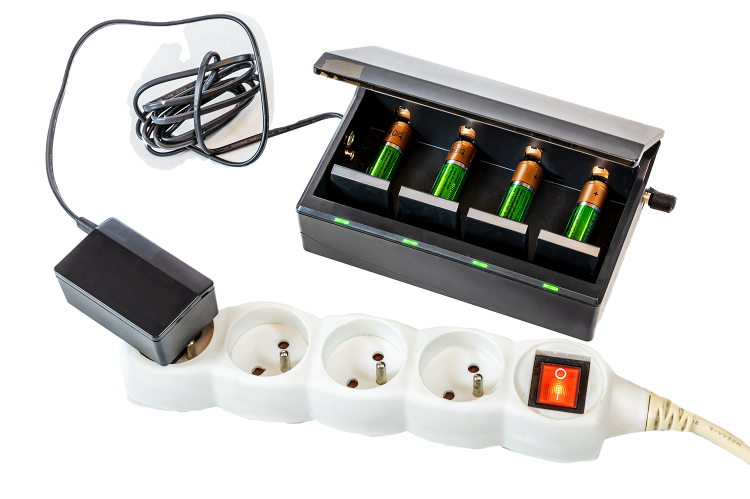Precautions to observe when using rechargable lithium-ion batteries aboard dive vessels
As result of recent tragedies, the US National Transportation Safety Board (NTSB) and the US Coast Guard (USCG) have issued safety recommendations that include limiting the unsupervised charging of lithium-ion batteries and reducing potential hazards from the use of power strips and extension cords.
Lithium-ion batteries are found in a wide variety of consumer electronics that we often bring with us on our trips—including smartphones, tablets and cameras—each of which have to be charged at frequent intervals. Quality lithium-ion batteries are safe if used as intended. However, a high number of heat and fire failures have been reported in consumer products. With more than a billion mobile phones and computers used in the world every day, the number of accidents is small but failures are bound to happen. Li-ion batteries that have been exposed to stresses may function normally, but they become more sensitive to mechanical abuse.
Overheating
If a Li-ion battery overheats, hisses or bulges, immediately move the device away from flammable materials and place it on a non-combustible surface. If at all possible, remove the battery and put it outdoors to burn out. Simply disconnecting the battery from a charger may not stop its destructive path. A small Li-ion fire can be handled like any other combustible fire.
PADI recommendations
In a press release distributed to the dive community on 29 January, PADI recommended observing the following guidelines regarding onboard use of electronics and charging:
- Charge only in areas designated by the crew in a dry place and away from flammables. On many vessels, this requirement may include use and storage of your cell phone and/or other personal devices.
- Use only manufacturer-designated chargers for each device and follow all instructions. Pay attention to battery groups (age, state of charge) and input power requirements. (The voltage fluctuation common to many boat generators may be an issue).
- Do not leave charging batteries or devices unmonitored.
- Remove batteries from chargers as soon as they are charged and disconnect the charger from the power source. Allow batteries to cool before charging and before use after charging.
- Store batteries as specified by the manufacturer. Do not store batteries in a charger and use the contact cover to prevent an accidental battery short, which can cause a fire.
- During charging and storage, use a lipo-safe bag or another suitable protective container as practical.
- Immediately disconnect any battery or device and its charger from the power source if it becomes abnormally hot, emits a smell, swells or does anything else unusual. Similarly, do not charge or use a battery that has been wet or may have impact damage. Do not re-use these damaged batteries, and keep them in a fire-safe location until they can be disposed of properly at an appropriate facility ashore.
- Do not overload circuits by charging too many devices at once; doing so can create a fire hazard within the boat’s electrical system. Take turns charging small groups of devices, and strictly adhere to limits established by the crew. Never “gang load” by plugging power strips into other power strips.
- Confirm the use of power strips and extension cords with the crew before use. If berthing requires a medical device (e.g. CPAP), confirm you can use it with the crew or boat operator before departure.


